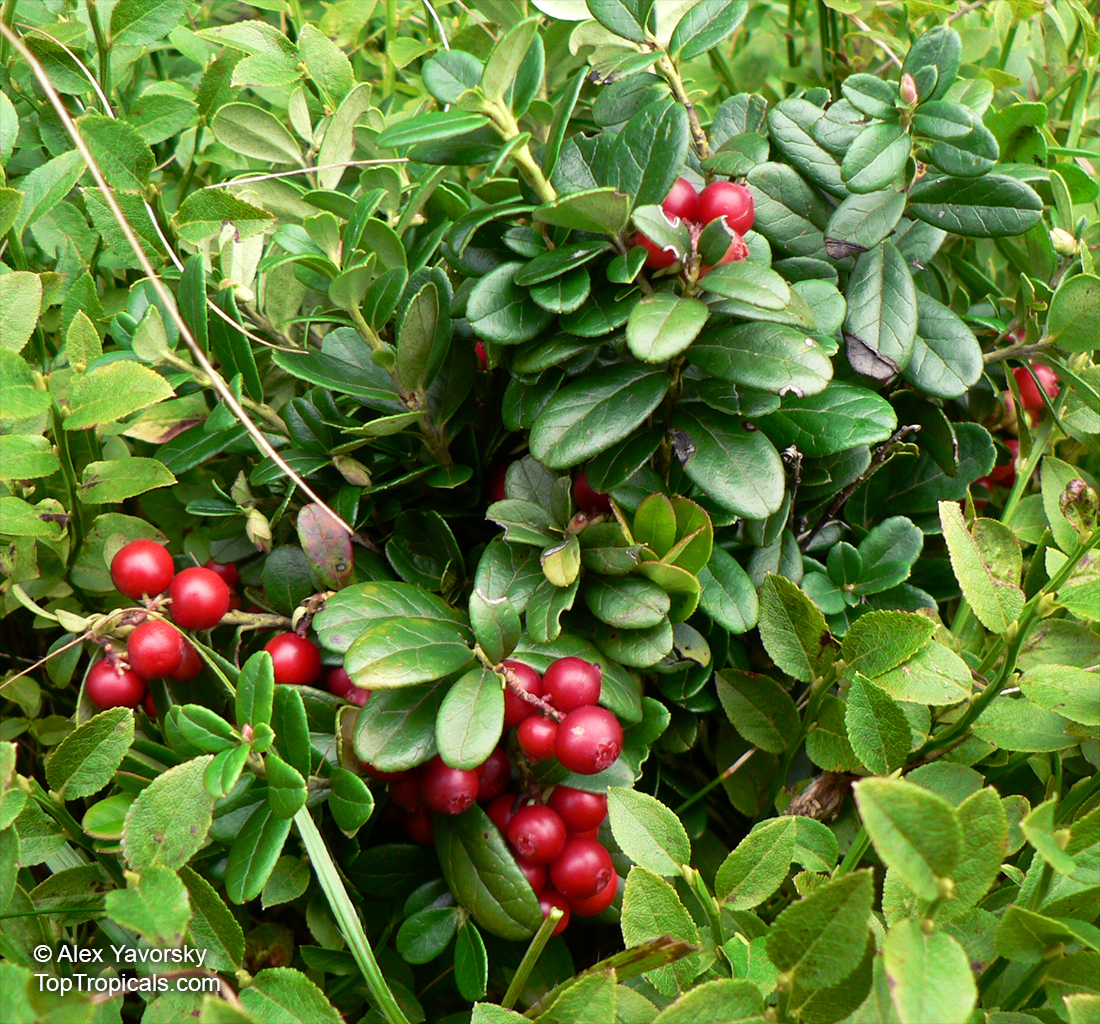Vaccinium vitis-idaea (Lingonberry)
Top Tropicals Plant Encyclopedia
Botanical name: Vaccinium vitis-idaea
Common names: Lingonberry, Cowberry
Family: Ericaceae










Lingonberries are popularly eaten with a variety of meat dishes, in particular with game meat. Vaccinium vitis-idaea is an ideal choice for those looking to create a low maintenance garden with impressive ground cover, an abundance of winter color, and the bonus of edible fruit. The shrubs may reach 2-5 feet in height. Lingonberry can be grown in full sun to light shade, but should be planted in a sheltered spot as its thin leaves are damaged by heavy winds and freezing temperatures below 24F. Water regularly or frequently as well as in times of prolonged drought and fertilize with a balanced fertilizer in the spring once a year. Lingonberry can be grown in USDA Zone 3-7 and the more severe the climate. The fruits of the lingonberry are high in nutrition, containing an impressive amount of vitamins, minerals, and antioxidants. It is high in dietary fiber, Vitamin C, Vitamin K and manganese. Lingonberry consumption has been associated with numerous health benefits which include improved vascular and lung function, bone health and risk reduction in chronic diseases such as diabetes and cancer. Typically a single plant can produced a plentiful supply of fruits each year, enough to make a plenty of jam.
